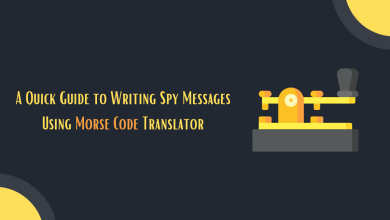Decoding Web Accessibility: From Compliance To Inclusivity

In an increasingly digital world, the accessibility of websites is more important than ever. While compliance with accessibility standards is essential, true inclusivity goes beyond mere adherence to regulations. For web design companies in Denver and beyond, prioritizing accessibility means ensuring that all users, regardless of ability, can navigate and interact with websites seamlessly. Let’s delve into the importance of web accessibility, the principles guiding it, and how web design companies can lead the charge toward inclusivity.
Understanding Web Accessibility
Web accessibility is a practice that ensures equal usability and access for all users. This includes those with disabilities. This covers a range of factors in web design, including auditory, cognitive, visual and motor accessibility. From adding alternative text to images to providing keyboard navigation options, the goal of web accessibility is to remove barriers to create a more inclusive online experience.
Accessibility
We cannot overstate how important web accessibility is. The difficulty of navigating and accessing websites for those with disabilities can make it frustrating if not downright impossible. The moral imperative of inclusion is backed up by legal considerations. One such example is the Americans with Disabilities Act. This law in the United States mandates that businesses guarantee equal access for goods and services including websites.
A website designed with accessibility in mind is more usable for all users and improves search engine optimization (SEO). The design of accessible websites improves the user experience for all users. It also enhances SEO and encourages greater satisfaction and engagement from the user. By putting accessibility first, web design agencies can create better and more user-friendly sites that appeal to a broader range of users.
Principles of Web Accessibility
Web accessibility has been guided by a number of core principles, as outlined within the Web Content Accessibility Guidelines WCAG developed by the World Wide Web Consortium. These principles are:
- Operable: Users have to be able to use a keyboard or mouse and interact with website elements using a range of input methods. It’s important that users are able to access all content via the keyboard. They should also have sufficient time to interact.
- Accessible: Contents and navigation should be accessible to all users. This includes the use of plain language, organizing your content in an organized manner, and providing instructions and error messages when needed.
- Robust: The websites must be compatible across a range of assistive technology and be future-proofed. This means using semantic HTML markup, making sure that screen readers and assistive devices are compatible, and not relying on specific devices or technologies.
Promoting Inclusivity: Moving Beyond Compliance
While compliance with the accessibility standards is an important step, true inclusiveness requires a paradigm shift. As opposed to viewing accessibility as simply a requirement or checklist, web design firms should embrace it and make it a core principle. This includes actively involving disabled users in the design and development process, asking them for their feedback and suggestions, and continuously striving to increase accessibility standards.
Includedness also extends to the wider user experience, which goes beyond the technical aspects. Consideration of factors such as language, cultural sensitivity, or user preferences is part of the process when designing a website. Web design company Denver can create online experiences that are more inclusive and engaging for all users by taking a comprehensive approach to inclusivity.
Conclusion
We can say that web accessibility goes beyond a mere legal requirement. This is a crucial aspect in creating a more equitable and inclusive digital world. Prioritizing accessibility is essential for web design businesses in Denver and beyond to create websites that will engage a diverse range of users.
By embracing principles of web accessibility and fostering a culture of inclusivity, Web design companies can pave the way for a better online experience that is accessible and inclusive for all users. Together, let’s decode web access and create a digital space that welcomes and includes everyone regardless of ability.
Apart from that, if you are interested to know about How to Make a Social Media Calendar in Simple Steps then visit our Digital-marketing category.


